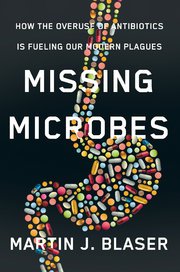Since myopia increased 66% between the early 1970s to early 2000s in the United States, it is thought that there are environmental factors at play, namely higher levels of education, all our close-up activities with new technology (reading, computers, tablets, etc.) straining our eyes, and spending too much time indoors. From The Atlantic:
Nearsightedness and the Indoor Life
Over the past 15 years, the world has witnessed an explosion of cases of myopia, or nearsightedness. A quarter of the world's population, or 1.6 billion people, now suffer from some form of myopia, according to the Myopia Institute. If unchecked, those numbers are estimated to reach one-third of the world's population by 2020.
The 2009 study is hardly the first to suggest that an increase in years of formal education and access to technology across society may account for higher myopia rates in recent years. Ophthalmologists and optometrists have cautioned that close-up activities like reading and using computers, tablets, and smartphones interfere with normal blinking and put a strain on the eyes. When abused, they can lead to double vision, myopia, and serious conditions such as retinal detachment and vision loss. The overuse of handheld electronics such as iPads and tablets by young children is especially worrisome, since their eyes are still developing and are more likely to be affected, according to researchers.
Kathryn Rose, a researcher of visual disorders at the University of Sydney's college of health sciences, recently concluded that spending too much time indoors also has a huge impact on eyesight deterioration. Rose said in a CNN interview that she was not sure how time spent using digital media relates to myopia progress, but that outdoor light has been shown to have a positive effect on vision. Studies from the U.S., Singapore, and China confirm a link between the time spent outdoors and the prevention of myopia, Rose said. However, both the level of light and the duration of exposure to outdoor light must reach a certain threshold to have a preventive effect, according to one of her studies. Spending at least 10 to 14 hours outside per week may prevent the early onset of myopia, she concluded.
Dr. Maria Liu, head of the Myopia Control Clinic that opened last year, explained that prevention and treatment success depend on early detection. Nearsighted children under 10 could benefit the most from intervention. This age group is also the most susceptible to eye damage from prolonged use of visual media, according to the myopia specialist."The eyeballs are very adaptive while they are developing," Liu told me. "If we impose a lot of near work on the eyes as they are developing, the eyes will interpret nearsightedness as being the normal state."
She explained the rise in myopia prevalence is likely caused by a shift in lifestyle from spending time outdoors to an indoor-oriented existence. Electronic devices play a major role in this shift, especially with young children being introduced to technology at an earlier stage in their life, and using handheld devices that require a smaller working distance than that for a physical book or television.
The Myopia Control Clinic specialists use corrective lenses (novel contact lenses) to slow down myopia in children. If applied early enough, corrective lenses have proven effective in treating the disorder. In cases with very high myopia progression, however, scleral reinforcement surgery is used to reduce or stop further damage caused by high myopia, which often can be degenerative. Atropine is the only drug that so far has proven effective in slowing myopia progression. The drug is used as a second line of treatment after all optical treatments fail.
Although modern lifestyle makes it harder to fight the disorder, there is something parents can do to prevent its early onset."Whether it is because hormonal levels are different outdoors, or because the light intensity is stronger, or because we do less close-up work, it has been shown consistently that outdoor activity is very protective and tends to slow the rate of progression."
Taking frequent 10-minute breaks from near-work and looking in the distance is also recommended, including for young adults who spend a lot of time working on computers or laptops and may suffer from accommodating spasms that cause blurry distance vision and dry eyes. Some specialists recommend limiting time in front of computers, TVs, and handheld devices to 1.5 hours a day, especially for young children.

 Excerpts from a very interesting NPR interview with Dr. Martin Blaser and his views on the human microbiome. The big take-away: our modern life-style is not good for the gut microbiome. His recently published book is Missing Microbes: How the Overuse of Antibiotics is Fueling Our Modern Plagues.
Excerpts from a very interesting NPR interview with Dr. Martin Blaser and his views on the human microbiome. The big take-away: our modern life-style is not good for the gut microbiome. His recently published book is Missing Microbes: How the Overuse of Antibiotics is Fueling Our Modern Plagues.